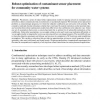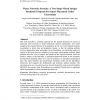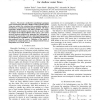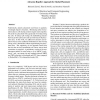19 search results - page 1 / 4 » New formulation and optimization methods for water sensor pl... |
MP
2006
13 years 5 months ago
2006
We present a series of related robust optimization models for placing sensors in municipal water networks to detect contaminants that are maliciously or accidentally injected. We f...
CCE
2007
13 years 5 months ago
2007
This work describes a stochastic approach for the optimal placement of sensors in municipal water networks to detect maliciously injected contaminants. The model minimizes the exp...
CDC
2009
IEEE
13 years 6 months ago
2009
IEEE
We present a method for assimilating Lagrangian sensor measurement data into a Shallow Water Equation model. Using our method, the variational data assimilation problem is formulat...
SIGMOD
2003
ACM
14 years 5 months ago
2003
ACM
Finding patterns in large, real, spatio/temporal data continues to attract high interest (e.g., sales of products over space and time, patterns in mobile phone users; sensor netwo...
ICCAD
1999
IEEE
13 years 9 months ago
1999
IEEE
Traditionally, analytic placement used linear or quadratic wirelength objective functions. Minimizing either formulation attracts cells sharing common signals (nets) together. The...




